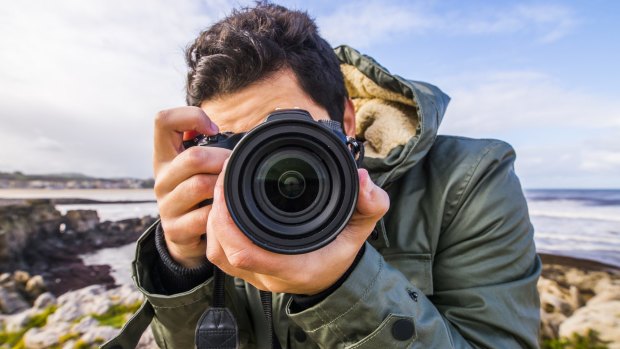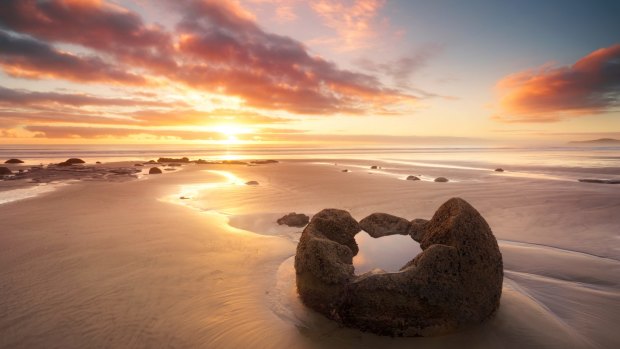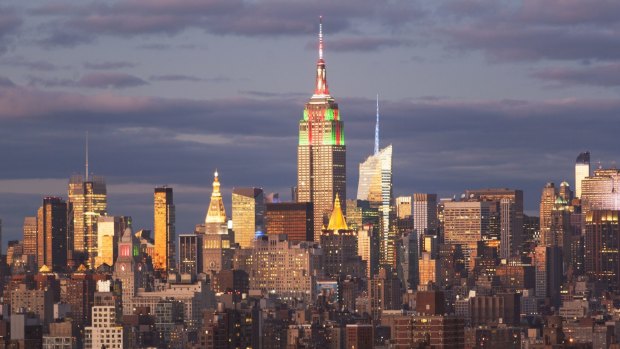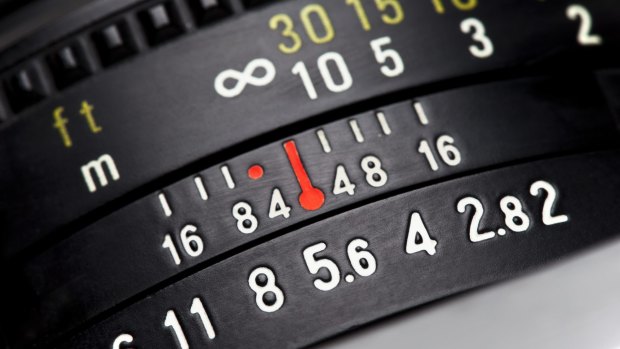This was published 7 years ago
How to improve travel photos: Ten tips to shoot like a pro
By Michael Gebicki

Capturing the moment. Credit: Getty Images
1 PERFECT TIMING
Light is everything to a photographer, as important as the subject, which is why great photographers tend to be early risers. Early morning and late afternoon, when the low angle of the sun gives a warm, soft light, is the time to get busy with your trigger finger. Relax in the middle of the day, particularly in tropical locations where an overhead sun creates harsh black shadows and dazzling highlights. As a rough rule of thumb look to shoot when your shadow on the ground is at least as long as you are tall.
2 NIX THE ON-CAMERA FLASH

Golden glow: The best light for photos is when your shadow is as long as you are tall.Credit: Getty Images
If it's the Empire State Building at night or an evening performance of Aida in Verona your flash is not going to light it up. Light is subject to the inverse-square law, which means its power falls off exponentially as you back away from your subject. The flash that comes with your camera is effective at a maximum distance of about five metres. Another thing, on-camera flash is a harsh light, best left for those times when there is no other way of getting the shot.
3 DON'T SEND YOUR BESTIE ON THE LONG MARCH
Want to photograph your beloved on the Princess Diana bench against the Taj Mahal? Sure, you want to get the fabulous building in the frame but don't send them back until they're just a dot. Three body lengths is about as far as you want to stand from a human subject if you want to capture that dazzling smile, that joie de vivre that lights up their being.

The Empire State Building.Credit: Getty Images
4 DITCH THAT UV FILTER
When you buy a new camera, the salesperson will swear you need a uv filter to whack on the front of your lens but it's the shop that benefits most. True, it does protect your lens from smears and nasty fingerprints but optically it does zero on a digital camera and it adds another unnecessary glass element for light to pass through. If you want to protect your lens a lens hood is a much better idea. Not only does it absorb some of the impact if you knock your lens against something or heaven forbid, drop it, but it helps protect against lens flare, and that really does make for a better shot.
5 HANDS ON

Work the aperture and focus from below.Credit: Getty Images
Holding your camera with one hand, pointing it vaguely in the general direction of your subject and blasting away might look cool but what you're probably getting is blurry, tilted shots with lots of sky. There is a place for haphazard arthouse photography but unless you're moving in gallery circles your genius will most likely go unappreciated.
6 CRADLE YOUR CAMERA
Most amateurs will crank a zoom lens with their hand from above. A pro will have one hand on the shutter release and the other cradling the camera body from below and working the zoom ring with the thumb and index finger of the same hand. That hand underneath is vital for extra stability and to counteract the downward motion when you press the shutter release, especially when you're working with a long lens.
7 SINGLE POINT FOCUS
Most cameras give you a choice of focus modes and while multi-point focusing does a decent job, the system doesn't know whether it's the eyes of your subject, that exotic ring through their ear or the flower they're holding that you want pin sharp. Only you the photographer can make that decision, which is why you should set your camera to focus on a single point. Most cameras will allow you to set focus when you depress the shutter button slightly, then you can re-frame for your masterpiece.
8 LIVE BY THIRDS
Putting that iceberg smack in the middle of the frame is just plain boring. Context is everything and an image with the subject off-centre is more informative as well as more pleasing to the eye. Some photographers work to the rule of thirds, drawing two imaginary vertical and horizontal lines on your viewfinder and placing your subject on one of the points where those lines intersect. If you've already caught your main subject in mid-frame you can always crop for a better possie when you edit.
9 BEAT THE BATTERY BLUES
So here you are with orcas steaming all around your vessel and your camera battery just died. And no, I can't lend you one because they're not compatible. Charging your battery can be a chore but don't leave it until your battery is out of juice. Better still, carry a spare.
10 APERTURE PREFERRED
Most pro photographers will set their camera's metering system to aperture priority rather than the program mode that does all the thinking for you because it gives them control over depth of field, the area within the image that you want to be in focus. Sometimes you might want to pop just the eyes of your subject and blur everything else, if it's a panoramic vista of the Grand Canyon you probably want everything sharp. Only by selecting a larger or smaller aperture – those funny little f-stop numbers – will you achieve that.
Sign up for the Traveller newsletter
The latest travel news, tips and inspiration delivered to your inbox. Sign up now.